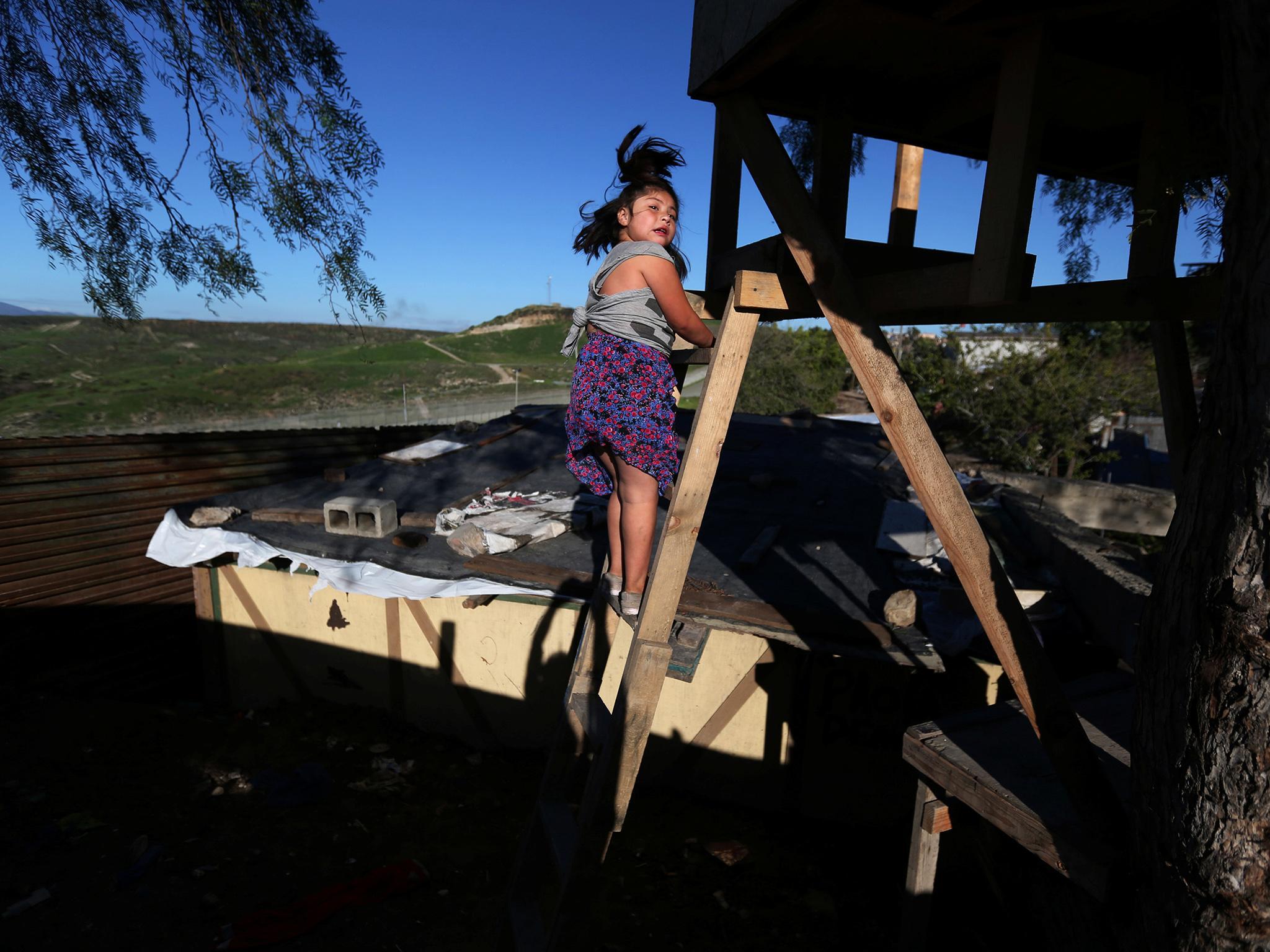Treehouses and mansions: Life in the shadow of the US-Mexico border
Donald Trump’s campaign promise to build a wall on the US border with Mexico certainly caught the headlines, but will it actually stop illegal crossings? Edgard Garrido and Lizbeth Diaz meet residents living right on the fence who aren’t convinced

The rust-red US fence along the Mexican border has inspired various quirky architectural structures, from a frontier-themed mansion to a humble treehouse with uninterrupted views across the Californian scrubland.
Carlos Torres, an architect in the northern Mexican city of Tijuana, has lived in a house in the shadow of the US border for three decades, and the fence that US President Donald Trump has vowed to expand begins at the end of his garden.
Yet far from seeing the metal wall as an eyesore, he chose to make it a central piece of the design aesthetic of his lavish home, which he has named The First House in Northwest Mexico.
A specially erected viewpoint provides a panoramic vista into the United States, while his garden is littered with border paraphernalia, such as a signpost indicating the start of US territory.
Although Torres has embraced his little section of wall, he doubts the larger fence that Trump envisages will work.
“Walls won’t halt immigration,” he says from his viewing balcony, which also looks out onto the Pacific ocean. Trump, he says, “doesn’t know what he’s talking about. Here at this fence, people keep crossing every week”.
The wall also dominates Pedro and Carmen Hernandez’s garden, but unlike Torres, they don’t have the means to turn it into a design feature. Instead, they use the corrugated metal that looms over their modest home to hang their clothes to dry.
“Sometimes, we’ve had people in our gardens who are trying to cross over,” Carmen says. “This area has been dangerous for years. We’ve had murders and kidnappings. But one learns to live with it.”
A few miles east of Torres’s mansion, Guatemalan chef Joaquin set up a much simpler home in the branches of a tree, just metres from the border.
Deported from the United States a few years ago and with little money to spend, Joaquin – who does not want his last name used – hoisted a scruffy mattress into the heart of the tree and spends his nights staring up through the leaves into the heavens. During the day, he often spots dozens of migrants trying to sneak into the United States.
“I’ve tried to cross so many times that the [US] border guards even got to know me, but I never made it back,” says Joaquin, who makes a living by collecting rubbish in Tijuana that he tries to sell to a local recycling plant.
Reuters
Join our commenting forum
Join thought-provoking conversations, follow other Independent readers and see their replies
Comments